With Fallout 4 due out in November, gamers are once again set to descend upon the nuclear wasteland. Although this time we also get to (briefly) experience life before the apocalypse as well as 200 years afterwards, when the main character emerges from the safety of a Vault into a world changed beyond recognition.
This post originally appeared on Kotaku UK.
At about the same time that the game was announced back in the summer, I found out about ‘Scotland’s Secret Bunker‘, a real-life Fallout Vault about an hour-and-a-half away from my home in Edinburgh, just near St Andrews. This top-secret nuclear bunker was built in the early 1950s and only decommissioned and made public in 1993.
It got me thinking – what would life really be like in a Fallout Vault? Putting the crazed Vault-Tec experiments to one side, would it be possible for humans to live underground for an extended period of time? How big are the real-life Vaults? Would society be able to carry on inside them, just like in (some) of the video game Vaults? Would a real-life Vault even be able to survive a nuclear blast? I set off in my crumbly old Mondeo in search of some answers.
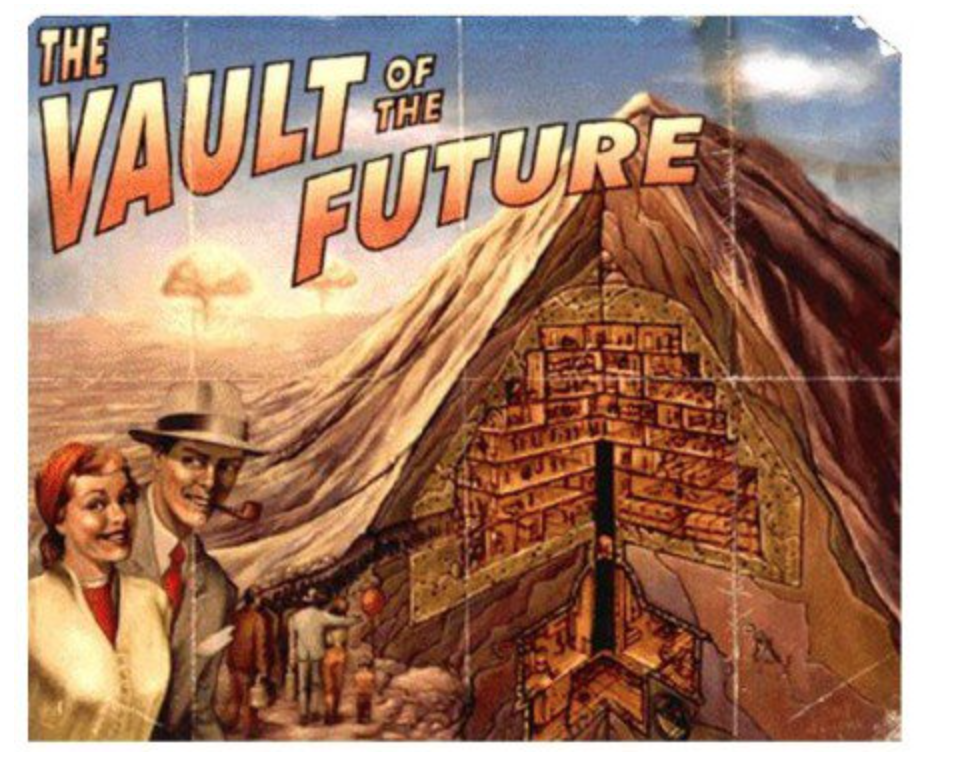
Fallout Vault advert (Credit)
The Scottish bunker – or Troywood, to give its real name – is situated deep in the countryside, a safe distance from the major cities and military bases that would have been the major targets of a nuclear attack. When it was built in 1951, the 250 contractors who worked on the construction were forced to sign the Official Secrets Act and were never told what they were working on, although since at least 1993 the existence of the bunker has been common knowledge – as indicated by the paradoxical three-metre-high sign on the motorway directing travellers towards “Scotland’s Secret Bunker.” Presumably the sign wasn’t there during the Cold War.
As I neared my destination, a lone, almost perfectly conical hill loomed in the distance, looking for all the world like the ‘Vault of the Future’ in the Vault-Tec brochures. I imagined a hollowed-out mountain, complete with circular rolling door and nuclear generator in the basement.
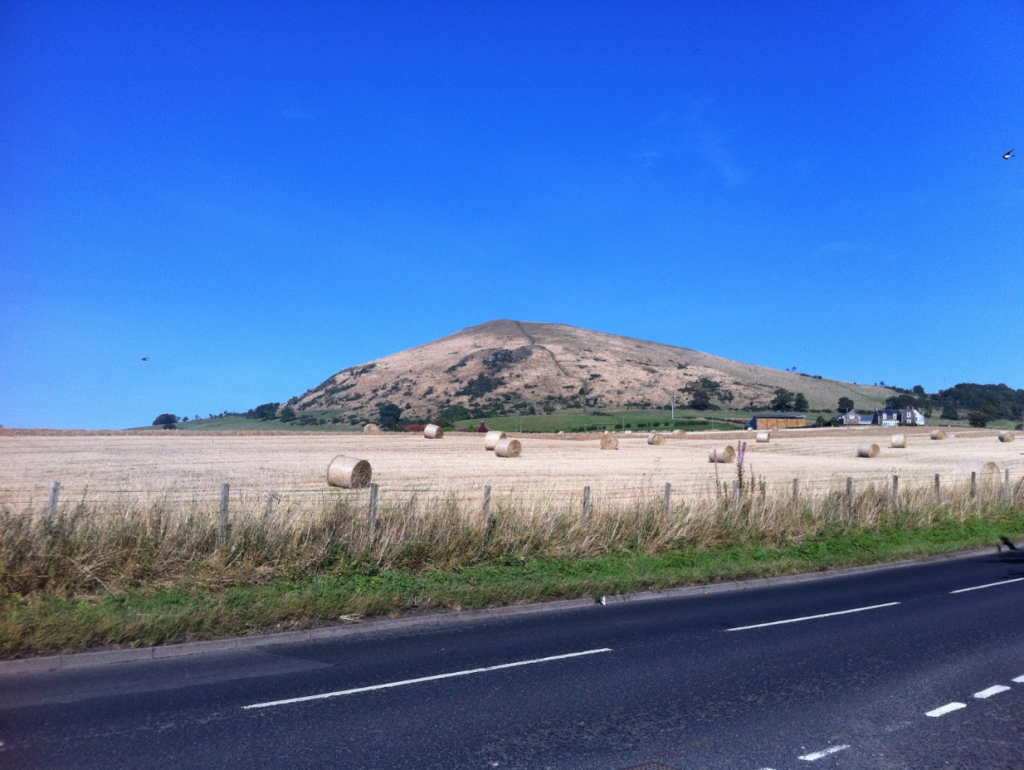
Sadly, this isn’t the real-life Vault.
Instead, the signs took me past the conical hill and towards an inconspicuous farmhouse behind a screen of trees. The Soviet missile trailer parked outside was sure sign that I was at the right place, but back in the day there would have been very little to indicate to passing Russian planes that this was in fact a top-secret nuclear bunker.
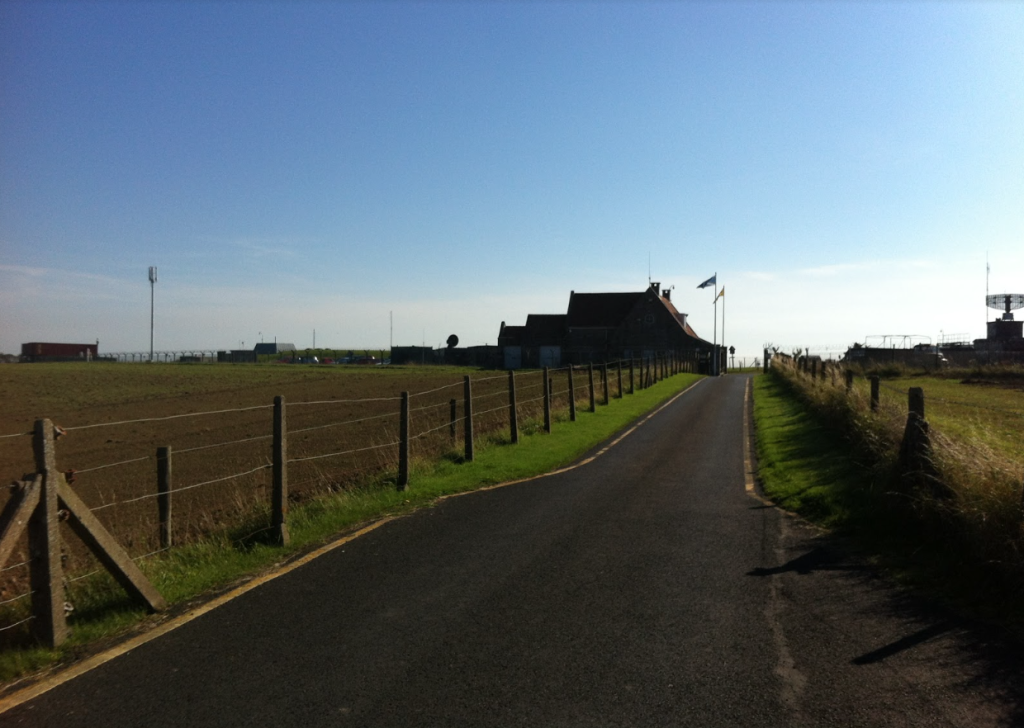
The farmhouse that acts as a disguised entrance. You can just about see the missile truck on the right.
Inside, a narrow doorway leads to steep steps down, followed by a 140-metre tunnel that gently slopes downwards and ends in enormous red blast doors weighing 3 tonnes. Beyond these is the bunker itself, spread across two floors that are each the size of a football pitch. In other words, it’s pretty huge.
Having said that, it’s far from the size of the enormous Vaults in the Fallout games, which cover several floors with labyrinthine corridors and every amenity imaginable. By contrast, living conditions are seriously cramped in the real-life bunker, and there’s little room for mod-cons. There’s just one dormitory with a few rows of bunk beds – far too few for the 300 people that would be expected to evacuate here in the event of a nuclear war. To accommodate everyone, a ‘hot bed’ system would have been used, with multiple people sharing beds and sleeping in six-hour shifts.
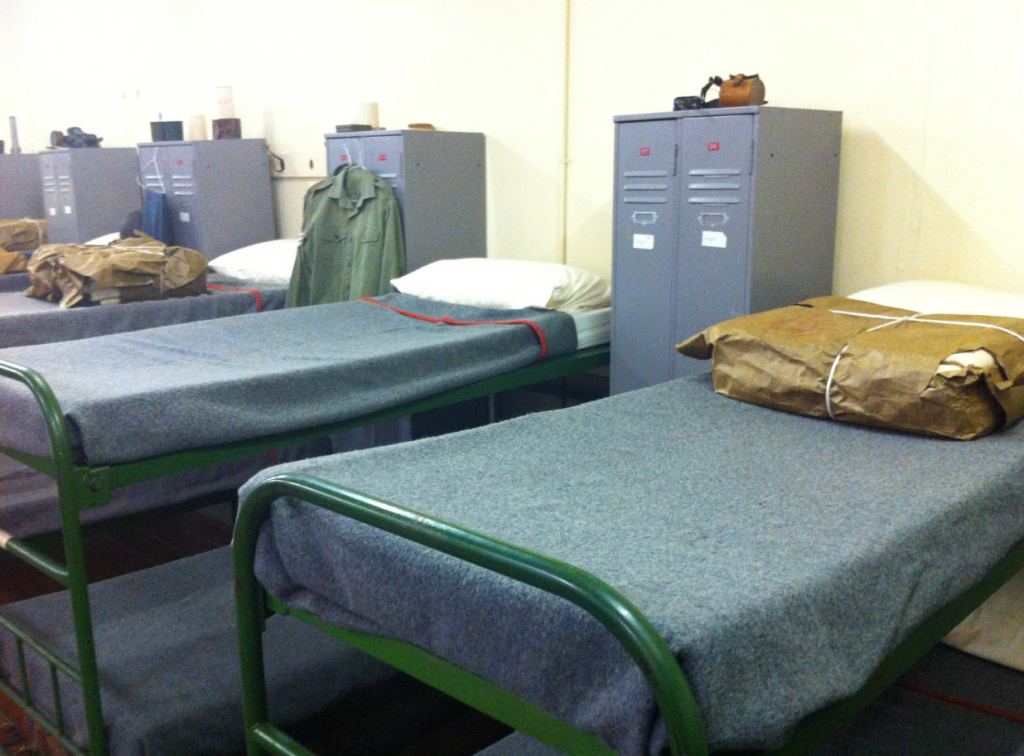
The dormitory would have become pretty smelly pretty quickly, one imagines.
But if you were one of those lucky 300, you would have been seriously grateful for even having the chance to share a tiny bunk bed. Unlike in the Fallout games, where civilians buy their spots in the Vaults, the Troywood bunker was very much a secret military affair – only specified members of the Civil Defence Corps and government officials would have been allowed in, provided they could get there in time. In the event of a nuclear war, civilians attempting to gain unauthorised entry would more than likely have been summarily shot.
That’s if there was anyone left outside, of course. It’s likely that upwards of 17 million people would have died in the aftermath of an all-out nuclear attack, and millions more would have perished from radiation poisoning and starvation in the months that followed. The government made a series of public information films during the 1970s called ‘Protect and Survive’ with the ostensible aim of providing citizens with practical means on how to live through a nuclear war. Famously, one of the pieces of advice was to take doors off their hinges and prop them at an angle against the wall to create an ‘inner refuge’ safe from nuclear blasts and fallout (skip to 11.50 in the video below).
It’s widely agreed that most of the advice given in the films would do nothing to actually help people survive. The aim was more to give them something practical to do to stop them panicking and fleeing the cities, causing even more chaos.
The Troywood bunker was to be the last bastion of law and order in Scotland in the event that all major cities were destroyed. It was designed to act as a regional HQ, from where a government minister could issue orders to the surrounding area and generally try to keep the region running. Various government departments – such the Ministry of Health and the Treasury – were represented in the command room, despite amounting to little more than one person sat behind a desk. Even the Department of Social Security was represented – presumably the government still planned on issuing pensions and unemployment benefit in the event of a nuclear attack.
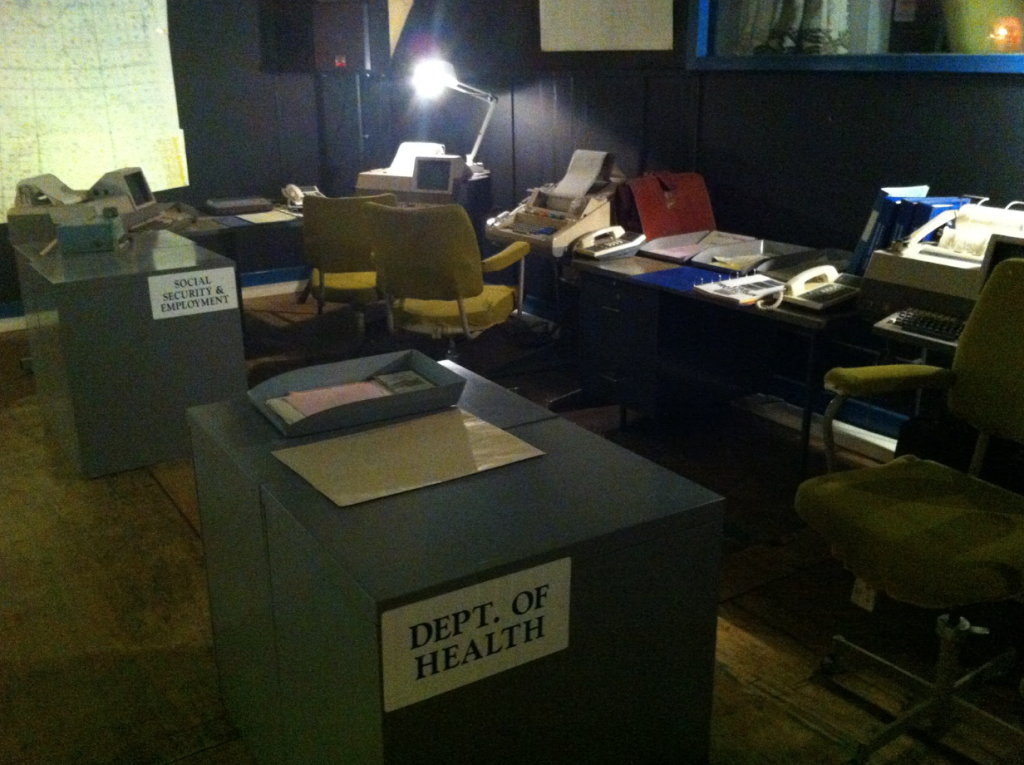
The Department for Health and the DSS, in straitened circumstances.
The centre of the command room features a see-through visual display of Scotland on which bomb blasts and the spread of fallout could be plotted based on information coming from the outside. Chillingly, the display still carries the map of destruction from a war-game exercise that was carried out just before the bunker was decommissioned. Behind the map is the all important red phone; the Minister of State in charge of the bunker was authorised to use this phone to give the go ahead for retaliatory nuclear strikes.
The main aim of the Troywood bunker was to keep some sort of government going even as society was falling apart. There was a network of similar bunkers scattered all across the UK (some are still viewable to the public, like Kelvedon Hatch in Essex), and they formed 11 regional seats of government that could operate autonomously if Westminster was destroyed and communications across the country were severed. The eventual aim would be for the regional governments to connect up and establish a new nationwide government.
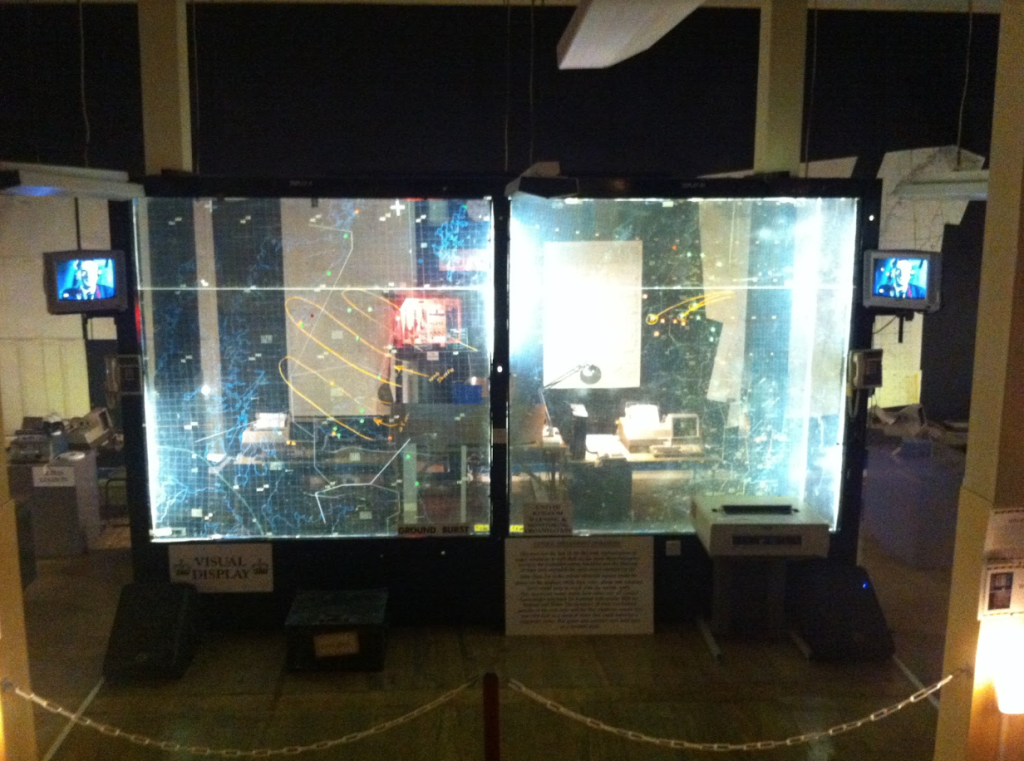
The control room map – note the red telephones behind.
Communication was the key role of the Troywood bunker. Nearly 3000 phone lines radiate out from its switchboard so that information could be gathered quickly and disseminated widely. Mechanical switchboards and telephones were used right up until the 1990s – long after they’d been superseded by digital technology – for the simple reason that they would be relatively unaffected by an EMP blast from a nuclear bomb. But just to be sure, and to protect the various electronic equipment on the site, the entire bunker is encased in an enormous Faraday cage.
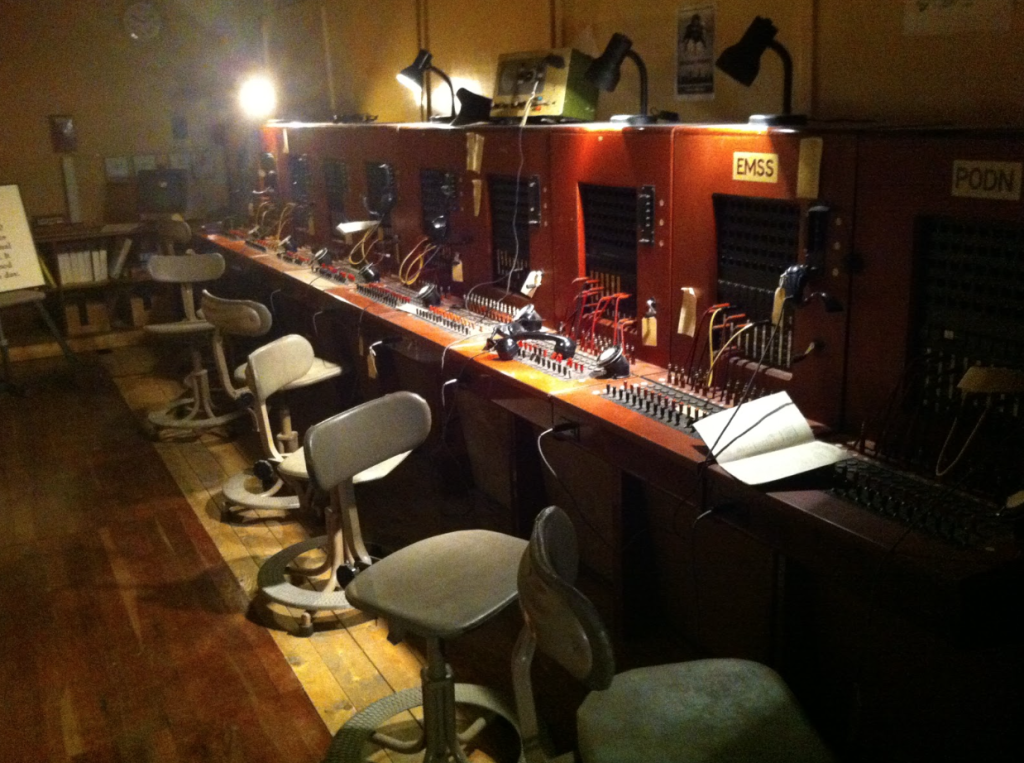
The old-fashioned switchboard.
There’s also a BBC radio studio on site that would issue bomb warnings and practical information, as well as providing ‘light entertainment’ in the form of music. In the event of nuclear war, this tiny room would have been the last remaining radio station in the UK. Whether there would have been any radios to broadcast to is debatable – most would have been rendered inoperable by EMP blasts.
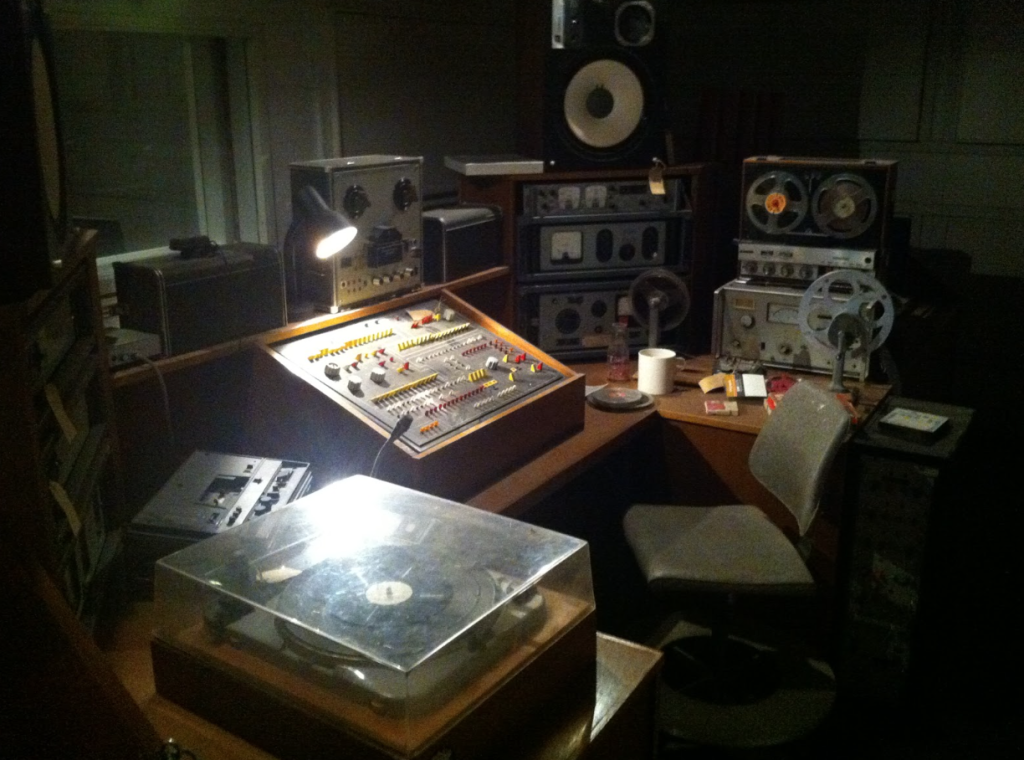
The BBC studio in Troywood.
But would the 300 people inside this bunker have survived? Like the Lone Wanderer of Fallout 3, would they have been able to shuffle blinkingly into the light once the fallout had dissipated?
Well, they certainly wouldn’t have survived a direct hit from a nuclear missile, even though the entire facility is encased in 3-metre-thick concrete with an extra layer of earth on top. But it’s estimated that the bunker could have withstood a bomb blast from three miles away with perhaps a few big cracks here and there.
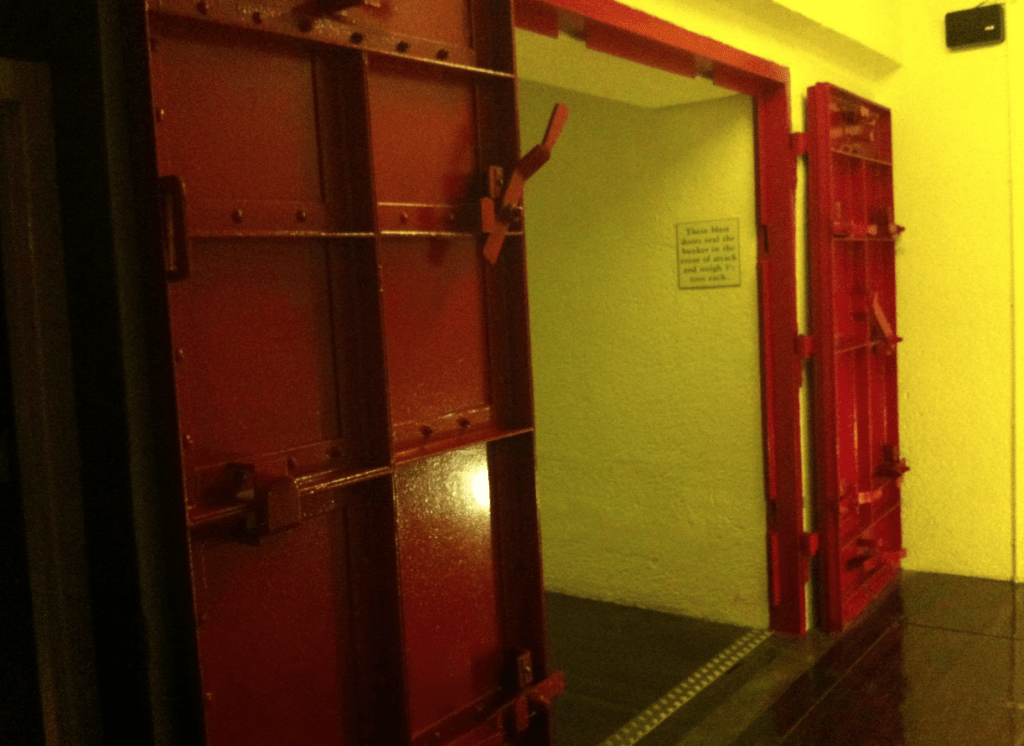
The three-tonne blast doors.
The blast is only the beginning though. The main point of the bunker is that it can be hermetically sealed from the outside world, so that radioactive dust cannot sicken the workers inside. The bunker is equipped with a seriously heavy duty air filtration system that could theoretically filter out radioactive particles and keep the residents safe. Should the main generator have broken down, a back up system could have kicked in and kept going for around three months.
But life inside would have been unremittingly hellish. Medicines would have been in short supply, so some speculate that anyone critically injured may well have been finished off with a pistol to save resources. Bodies would have been packed into cardboard coffins and stacked up until the fallout had lessened, at which point they would have been pushed outside. A heavily stocked armoury was kept to defend against looters.
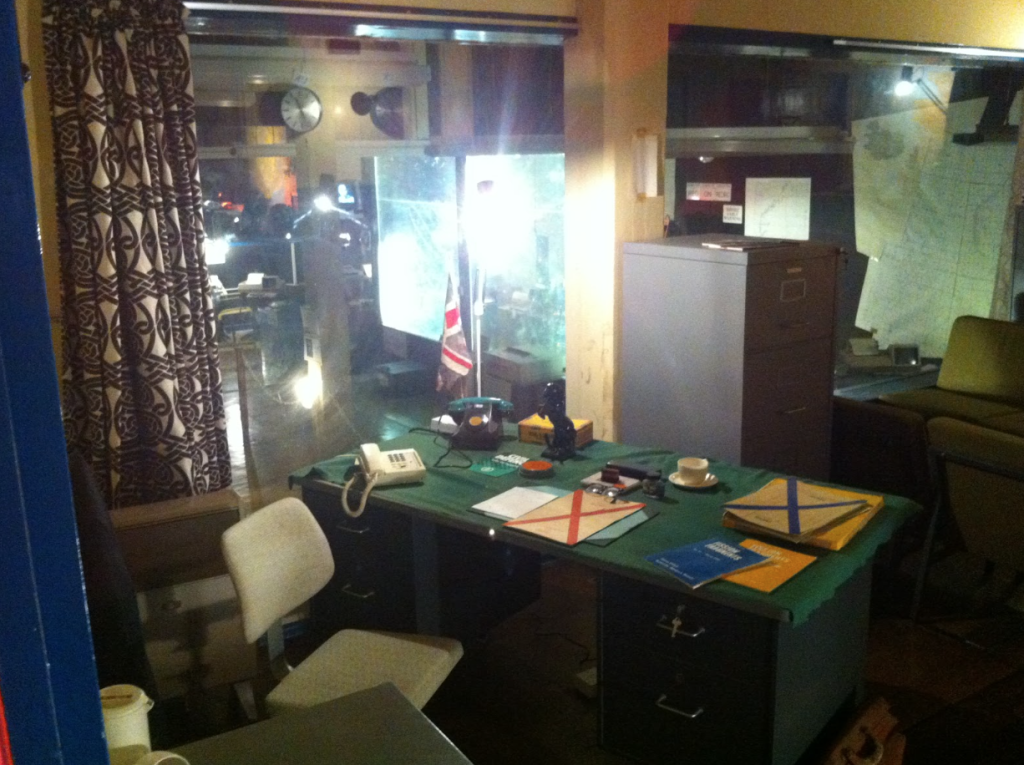
The Minister of State’s desk – they would have controlled Scotland from here.
In the Fallout world, the hero emerges to a new society comprised of supermutants, bizarre cults and wondrously mutated animals. In real life, the denizens of Scotland’s Secret Bunker would most likely have emerged to find total destruction and, despite their best efforts, civil anarchy like that represented in the suppressed 1965 film The War Game. In a worst-case scenario, they might emerge into a nuclear winter in which UK society has been reduced to medieval levels, as shown in the chilling Threads.
It’s thought that alongside the guns and secret documents that were safely stored in the Troywood armoury, there was also a large supply of cyanide pills. A nuclear attack could easily have destroyed the two entrances to the bunker, in which case the residents would have been trapped behind three metres of concrete – and faced with the choice of slowly starving to death or ending it quickly. Equally, with the world razed to the ground above, society in ruins and everyone you know dead or dying, some may have felt that there was nothing worth emerging for.
Lewis Packwood is a freelance writer and co-author of A Most Agreeable Pastime. Many thanks to Scotland’s Secret Bunker for providing access. All photos copyright of Lewis Packwood.

This post originally appeared on Kotaku UK, bringing you original reporting, game culture and humour with a U from the British isles.
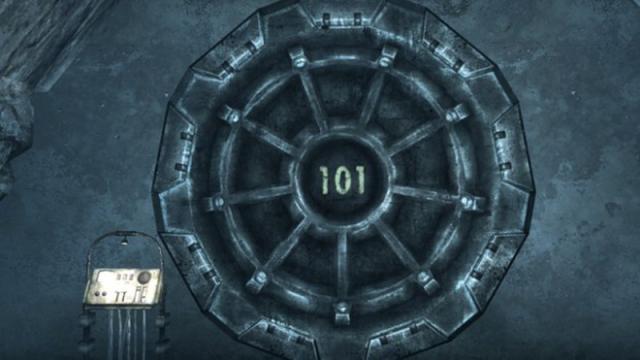
Comments
10 responses to “Inside Scotland’s Real-Life Fallout Vault”
Great story thanks!
I grew up in the 80’s in North-East Scotland close to an American air base. We knew that we would be targeted by the Soviets in the event of a nuclear war. It is funny how people think kids have it tough growing up now, but back then we had the threat of nuclear holocaust hanging over us. Even then that was better than our parents or their parents.
Damn, ending up like a Monty Python sketch…
its a weird feeling growing up in the cold war knowing there was a soviet missile commander out there sitting on a nuke that was aimed at your city. in my case here in australia we would of been air burst nuked to prevent the port being used by US ships.
To be fair, there’s still a fair chance of a nuclear attack today. I read a report about the old Soviet nuclear stockpile a while back – there were old nukes literally sitting in sheds with a single padlock on the door, and apparently they don’t know where a bunch of them are.
While the nature of the threat has changed, it is far from gone.
Yep. Many are now stating we’re in “Cold War II” or “The Colder War”
Well there’s that too, but the whole Russia vs. The West thing is a different factor altogether.
I mean… there’s always a chance that Putin will fire off a nuke at someone. Kim Jong Un is a more likely candidate, but that will destroy any relationship he has with China and basically ensure the end of his rule in NK, so still pretty unlikely. None of the western nations are nuking anyone, Pakistan and India probably won’t nuke each other, and Israel won’t allow Iran to get their hands on nukes. Then again, Israel is pretty hush-hush on whether or not they have nukes of their own (which they probably do), but again they would lose all international support if they dropped it anywhere so they won’t unless provoked.
It’s the non-national players that are a real concern – rebels, terrorists, ‘freedom fighters’, some group that can kill a few million people and not face the consequences that a nation-state would. Sure, maybe Iran won’t nuke anyone, but you can bet your bottom dollar that Hamas, ISIS or Hezbollah would without hesitating.
Falloot
Now what’s that aboot?
Hehe…well played.
This article is missing a picture of a Secret Bunker road sign.
http://www.hoopersigns.co.uk/wp-content/uploads/2012/04/secret-nuclear-bunker.jpg
Shhhh, don’t tell anyone!
Beat me too it! Saw that sign everywhere when i wad living around London. Always giggled too much to the amusement of the locals i was living with. Never ended up checking it out 🙁
Great Article Kotaku!
High Fives all round